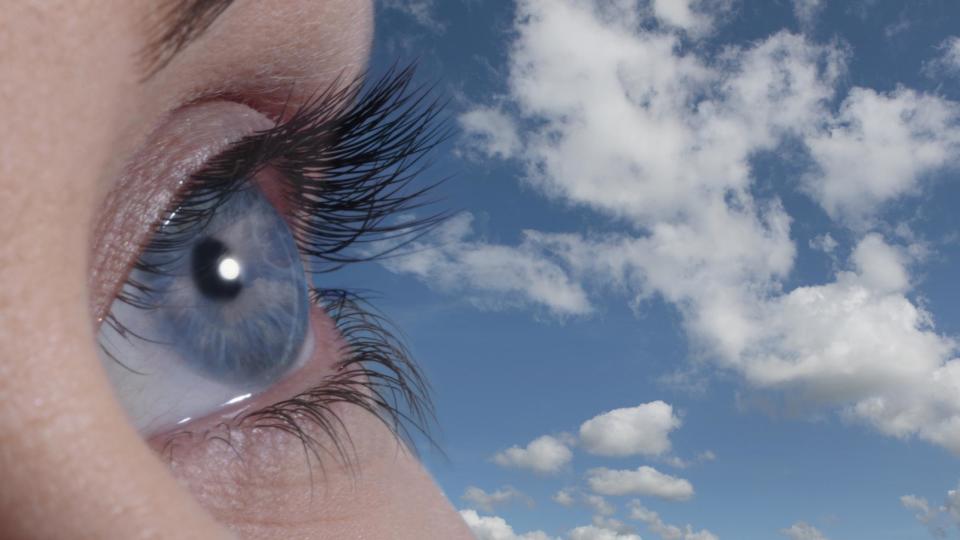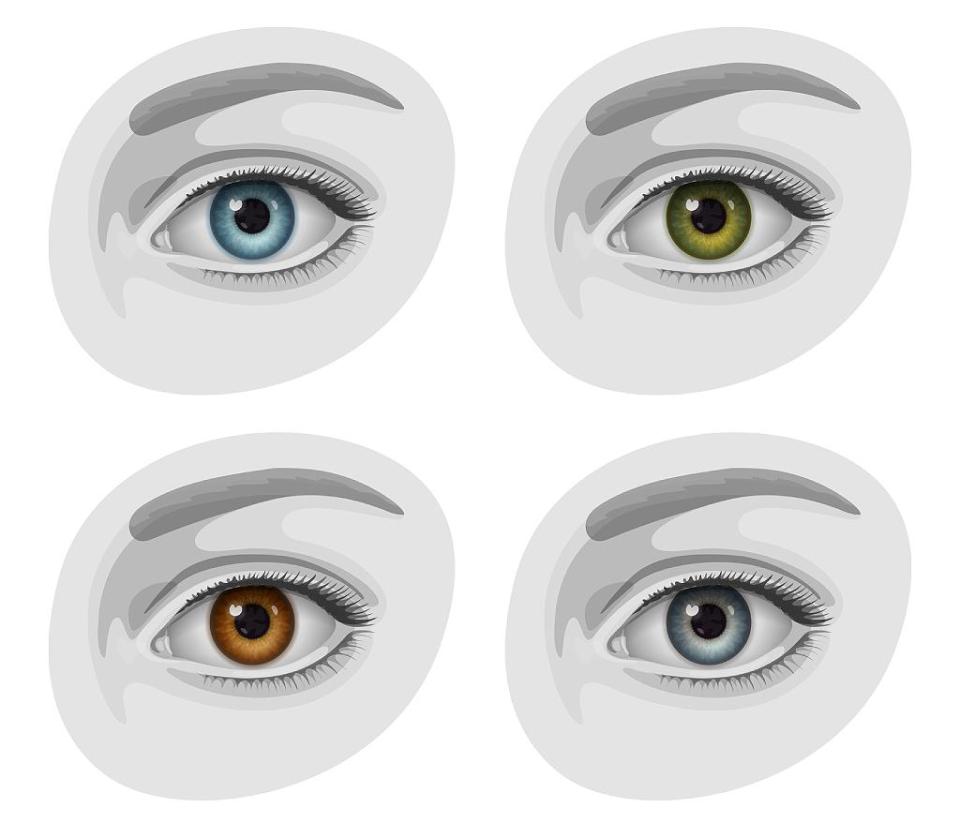
When someone says they have eyes as blue as the sky, it’s true… not only because they look like it, but because neither of them have blue.
Nothing in that place where white clouds float on a summer noon, or about 8% of the world’s population of irises of that color.
Absence arises from it the blue illusion.
That defect is accompanied by a physical phenomenon that makes it look like pigmentation.
To understand it, you need to dive into the color part of the eye.
The iris is composed of two layers: the epithelium at the back and the stroma at the front.
The epithelium is only two cells thick And in almost all cases, even in blue eyes, it has dark brown pigments.
Those dark spots in some people’s eyes are peeking through the epithelium.
This brown background contains the stroma, a delicate intertwining of colorless collagen fibers.
Most of the stroma contains melanin, the substance in the body that creates the pigment in our skin and hair.
The abundance or lack of that pigment is the determining factor when it comes to your eye color.
But not just one.
A disordered gene

Eye color is a distinctive part of your features.
And it’s unique: apparently no two people in the world have the same color eyes.
But to generalize, there is one that undoubtedly dominates the rest.
80% of people in the world have some variation of brown around their pupils.
The stroma of your irises has a high concentration of melanin, which absorbs most of the light and creates shades of brown, from chocolate to amber to hazelnut.
Darker ones are mostly found in Southeast Asia, East Asia, and Africa, while lighter ones are found in Western Asia, Europe, and the Americas.
Interestingly, according to experts, all humans have had brown eyes for millions of years.
But still This occurred between 6,000 and 10,000 years ago. In an individual, “A genetic mutation It affects the OCA2 gene (involved in melanin production) in our chromosomes,” he explained in 2008. Original studyHans Iberg of the University of Copenhagen.
That mutation created a genetic switch that disabled that ancestor’s body’s ability to make brown pigment in its eyes.
So all blue eyes can be traced back to an ancient common ancestor, from which the trait of having no melanin in the stroma was inherited.
That is, the top layer of the iris is translucent, but we still have the question that there is no other pigment to give it color.
So where does blue come from?
Blue…and green and gray too

An explanation of why some eyes are blue is an explanation of why the sky is blue.: A phenomenon known as the Tyndall effect.
The Tyndall effect is the scattering of light by small particles floating in a liquid solution.
The fiber structure of the stroma scatters light in the same way, tending to scatter shorter wavelength light more than longer wavelength light.
When visible white light hits it, blue scatters more than other colors because it travels in shorter waves.
That’s why the same pair of blue eyes are sometimes more vibrant than others; Their color depends on the quality of light where they are.
An example is what scientists call the blue iris Structure colorIn contrast to pigmented color.
There is A wonderful event A substance has a certain color without a pigment of that color in it.
In fact, when you see blue in the natural world, it is a structural color.
For example, hyacinth maca (Anodorhynchus hyacinthinus), its feathers are not blue, although they appear because the nanochannels in the structure of the feathers change their light-reflecting properties.
While brown eyes are an evolutionary miracle, because melanin protects us from the sun, blue eyes are the result of an ancient genetic mutation and a miraculous event.
And greens?
Well, a bit of both.
The stroma contains a small amount of melanin, which gives it a light brown color, but because of the presence of translucent parts, the eye scatters the incoming light and the mixture of colors produces a green color.
Green eyes, although very common in places like Ireland and Scotland, are extremely rare: only 2% of the world’s population is estimated to have them.
A little more, 3%, is needed Gray eyesAnd they are a curious case.
They are known to have a similar blue color due to the absence of melanin in the stroma.
They are thought to be gray and non-blue because they have excess collagen deposits in the stroma that inhibit the bias of Tyndall towards blue light.
It scatters and reflects all wavelengths of light entering the iris equally, creating a uniform gray color.
So if blue eyes aren’t really blue, they aren’t gray either.
Is seeing equal to believing? Not always.
You may be interested | In the video
According to experts at Harvard University, what are the 6 best foods for the brain?



:quality(85)/cloudfront-us-east-1.images.arcpublishing.com/infobae/BH6NLAQGXJGADFWTENBUV7Z7RQ.jpg)
:quality(85)/cloudfront-us-east-1.images.arcpublishing.com/infobae/3GK63ATFOMFAYNUAQKUL4WUJFM.jpg)

:quality(85)/cloudfront-us-east-1.images.arcpublishing.com/infobae/SJ35ZLSJ5NB4BWVRJPSK74P7AQ.jpg)